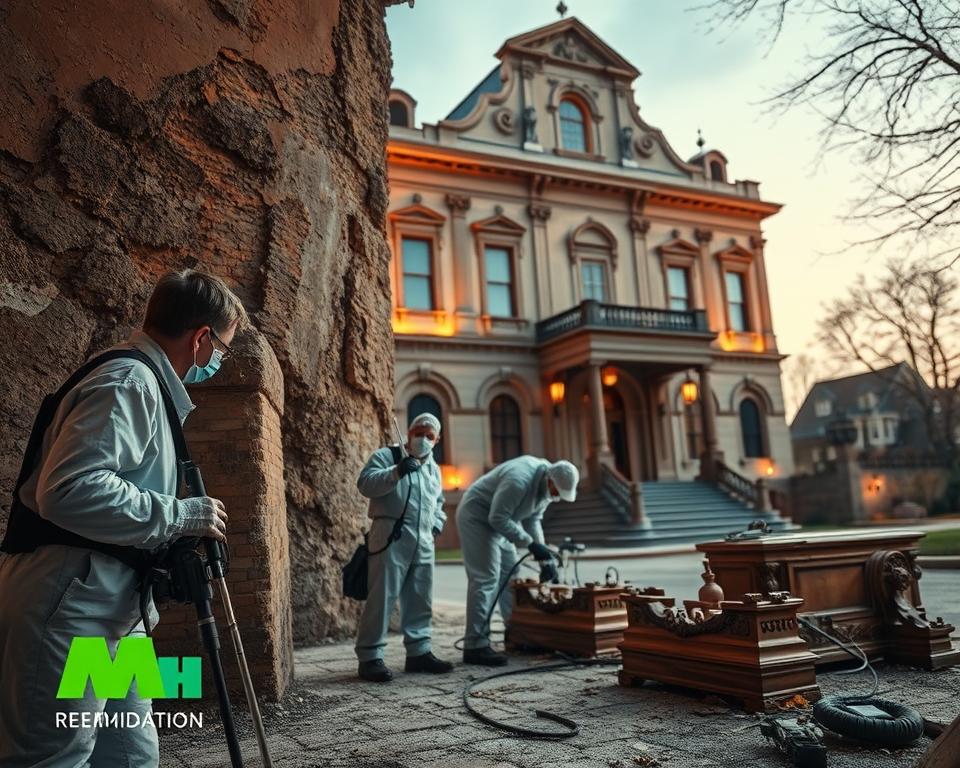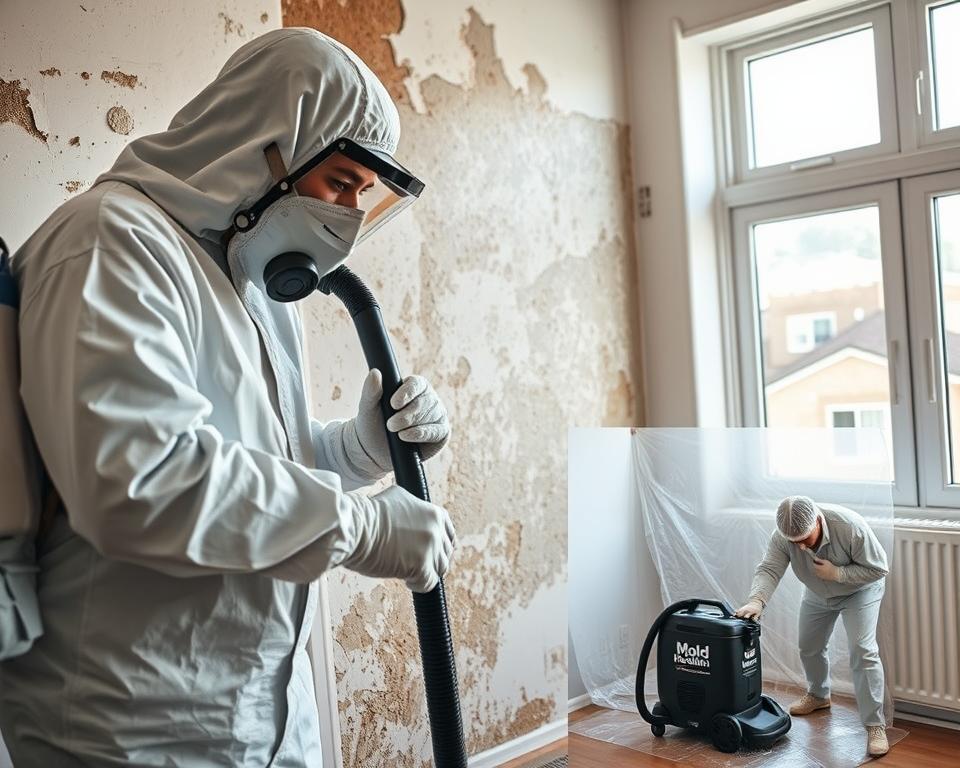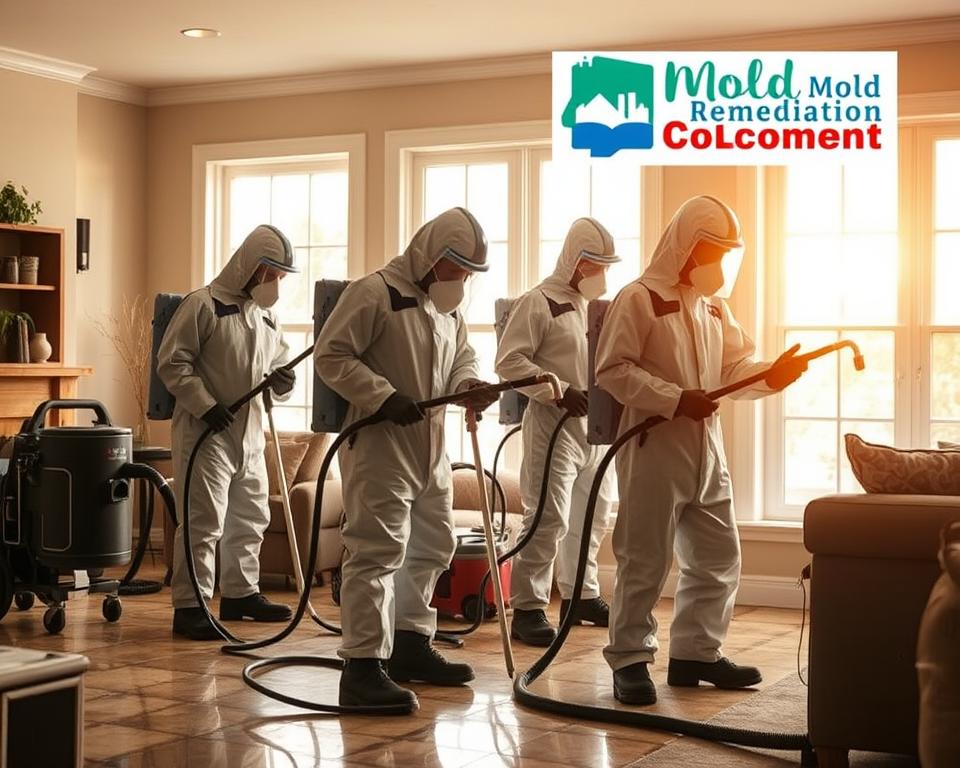When moisture lingers, mold colonies can spread rapidly—sometimes within a single day. This fast-growing issue isn’t limited to modern buildings. Older properties, especially those with unique architectural features, face even greater risks due to aging materials and hidden vulnerabilities.
Addressing these situations demands precision. Structures built decades or centuries ago often contain delicate woodwork, plaster, or craftsmanship that modern methods could accidentally damage. Specialized teams use tailored strategies to eliminate hazards while preserving irreplaceable details.
Why does this matter? Cutting corners risks losing historical charm or causing long-term harm. Certified professionals combine advanced technology with deep knowledge of vintage construction to ensure safety and authenticity. Their work protects both the structure’s legacy and its occupants’ health.
Key Takeaways
- Mold spreads quickly—often within 24–72 hours—if moisture isn’t controlled.
- Older buildings require unique approaches to avoid damaging original materials.
- Balancing thorough removal with preservation is critical for maintaining historical value.
- Teams must understand older ventilation systems and construction methods.
- Proper remediation ensures compliance with preservation guidelines and health standards.
Understanding Mold Challenges in Historic Homes
Moisture issues in aged buildings create ideal environments for fungal spread. The EPA states that unchecked water accumulation in structures often leads to mold proliferation. Older properties face heightened risks due to materials like original wood beams and plaster that absorb moisture differently than modern alternatives.
Identifying Common Mold Growth Areas
Problem zones often appear where air circulation falters. Key trouble spots include:
- Wooden support beams in basements or attics
- Plaster walls with hidden condensation pockets
- Window frames with deteriorated seals
These areas trap humidity, allowing spores to thrive unnoticed until visible damage appears.
Assessing Moisture and Structural Damage
Specialists use infrared cameras and moisture meters to locate hidden water sources. This approach prevents unnecessary damage to irreplaceable features like hand-carved trim or stained glass. Evaluations also check how moisture weakens load-bearing elements over time, creating safety concerns alongside biological growth.
Teams prioritize methods that protect original craftsmanship while eliminating hazards. Their findings guide customized plans addressing both immediate threats and long-term preservation needs.
Historic Home Mold Restoration Experts
Antique buildings present unique challenges that standard remediation methods can’t address. Their original features—from handcrafted woodwork to century-old plaster—demand solutions protecting both structural safety and historical significance. Certified technicians with IICRC credentials combine modern science with respect for traditional craftsmanship.

The Unique Needs of Historic Properties
Older structures often contain materials rarely used today. Vintage lumber reacts differently to moisture than modern plywood, while traditional lime plaster requires gentler cleaning than drywall. Teams use three key strategies:
- Non-invasive testing tools to locate hidden growth
- Customized cleaning agents safe for delicate surfaces
- Climate-controlled drying to prevent material warping
Preserving Architectural Integrity
Successful projects maintain original design elements while eliminating hazards. Specialists collaborate with preservationists to select materials matching the property’s era. For example, they might use hemp-based insulation instead of fiberglass in 19th-century walls.
This careful approach ensures compliance with local heritage guidelines. It also protects value by keeping character-defining features intact for future generations.
Our Comprehensive Mold Remediation Process
Effective mold remediation requires a methodical approach tailored to each property’s specific needs. Certified teams follow strict protocols to address contamination while minimizing disruption to original structures. This ensures both safety and preservation goals are met.

Inspection and Mold Damage Assessment
Professionals begin with advanced detection methods. Infrared cameras identify hidden moisture pockets, while air quality tests reveal spore concentrations. These tools help create detailed maps showing affected areas without invasive probing.
Assessments prioritize locating water sources fueling growth. Moisture meters check walls and flooring for saturation levels. This data determines which materials need cleaning versus replacement.
Containment, Air Filtration, and Cleaning
Critical containment barriers isolate work zones using heavy-duty plastic sheeting. Negative air pressure machines prevent spore migration during mold removal. All HVAC systems remain off until clearance tests confirm safety.
HEPA air scrubbers run continuously, capturing 99.97% of airborne particles. Specialized vacuums clean surfaces without damaging delicate materials. Antimicrobial treatments then sanitize structural components like beams and ductwork.
Final inspections verify air quality meets OSHA standards. Only after passing rigorous checks do teams remove protective barriers. This systematic process resolves contamination while protecting irreplaceable architectural details.
Advanced Techniques and Safe Materials
Addressing fungal growth in aged structures requires specialized approaches that balance effectiveness with material preservation. Modern strategies prioritize eliminating threats while safeguarding original surfaces through science-backed methods.

Targeted Treatment Solutions
Antifungal products break down colonies without harming delicate surfaces. These EPA-registered solutions penetrate porous areas where spores hide, preventing regrowth. Low-toxicity formulas work on wood, plaster, and textiles while maintaining structural integrity.
Material Handling Protocols
Irreparably damaged items undergo careful removal using sealed containment chambers. Workers bag contaminated debris in double-layer polyethylene before disposal at approved facilities. Salvageable elements receive antimicrobial coatings to inhibit future issues.
Precision Equipment Standards
HEPA-filtered air scrubbers capture 99.97% of airborne particles during remediation. Moisture meters and thermal imaging cameras locate hidden dampness without invasive probing. All tools meet IICRC guidelines for spore elimination and air quality restoration.
Post-treatment inspections verify no visible growth remains. Air sampling tests confirm spore counts fall below safety thresholds. This meticulous process ensures lasting protection for both occupants and architectural heritage.
Choosing the Right Remediation Team
Selecting professionals to address fungal growth in older structures requires careful vetting. Quick action prevents minor issues from becoming major threats to architectural details. Look for teams offering 24/7 emergency services – delays can lead to irreversible damage.

Industry Credentials and Experience
Verify certifications like IICRC accreditation, which ensures technicians understand material compatibility with aged surfaces. Ask about their track record handling delicate projects in heritage properties. Proven experience matters – request case studies showing successful preservation during remediation.
Emergency response capabilities separate adequate teams from exceptional ones. Those with rapid deployment protocols minimize spore spread through containment barriers and climate-controlled drying. They also use equipment calibrated for sensitive environments.
Navigating Insurance Claims with Confidence
Reputable companies simplify complex paperwork through direct insurer coordination. SERVPRO-trained staff, for instance, document damage using standardized forms insurers recognize. This streamlined approach accelerates approvals while maintaining preservation standards.
Choose partners who explain each step clearly – from initial assessment to final air quality tests. Transparent communication builds trust during stressful situations involving valuable properties.
Conclusion
Protecting heritage structures from biological threats demands expertise that bridges past and present. Certified professionals use science-backed methods to get rid of persistent mold problems while respecting original materials. Their approach combines precise inspection tools with treatments safe for delicate surfaces in aged buildings.
Immediate action prevents irreversible damage to architectural details. Emergency response teams control moisture sources and deploy equipment designed for sensitive environments. This preserves structural integrity and maintains healthy air quality without compromising historical authenticity.
Property owners facing these challenges should call specialists versed in both modern remediation standards and preservation ethics. The right team delivers lasting solutions, ensuring treasured buildings remain safe havens for generations to come.
